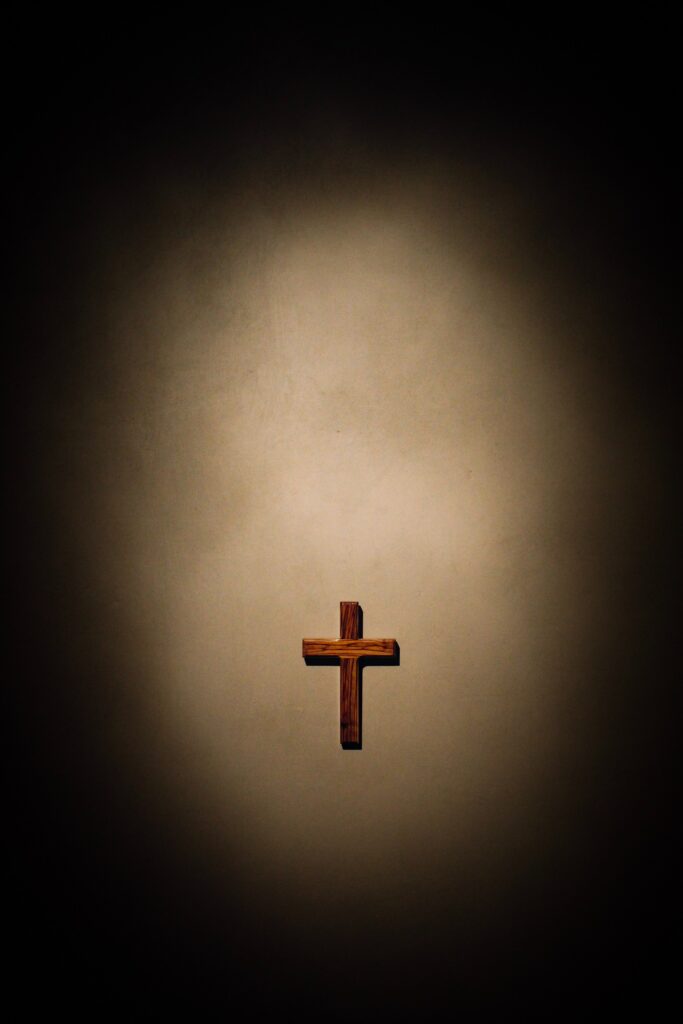
Part 1: Origins | Part 2: What It Takes
I suppose everyone meditating on the vicarious atonement has eventually asked the question “Why?” Why would God the Son, who is perfectly and eternally satisfied in relationship with the other members of the Godhead, take on human flesh and essentially move to the dump? Why would he endure decades surrounded by sin, facing situations every day that he finds repugnant? Why would he subject himself to death—and a death designed to be as gruesome, agonizing, and painful as possible?
Why?
In the story the Scripture tells, God has reasons for what he does. Those reasons may not always be apparent, but they do exist, and we learn that his reasons are good and right, even when they’re beyond our understanding or even our knowledge. (See under “Job.”)
In the case of the vicarious atonement, God has given us at least three reasons; there may well be more, of course, but we can be certain of as much as he has told us.
The Image
One of the first things we learn in the Scripture is that we humans, and only we humans, are in the image of God. We are not like the ground from which we were fashioned in Adam, nor like the plants, nor like the animals—birds of the air, fish of the sea, or beasts of the field (Ps 8.6-8). We are like God.
We’re not like God nearly as much as some people obviously think they are, but we are like him in significant ways. And that image is so deeply embedded in us that neither Adam’s willful disobedience nor all the accumulated sins of all the ages can eradicate it. Immediately after the Flood, God’s cosmic judgment spurred by the fact that “every imagination of the thoughts of [man’s] heart was only evil continually” (Ge 6.5), God reminds Noah that murder must be capitally punished, not because every human has a right to life, but because every human, even in a sinful age, is in the image of God (Ge 9.6)—and an attack on God’s image calls for the utmost penalty.
Note that the value, if we can use that word, of the human is not inherent to himself; it’s derivative from the value of God himself. It is God who gives his image value.
Well then. How will God respond when his image is in peril? He will rescue it, of course. And he knew he would do that, even before the peril came along.
The Plan
God’s design in creating and then rescuing mankind went far beyond simply multiplying his image around the planet. His design will culminate in the amassing of millions of his images—all who will come—into a throng perfectly united in harmony and grace, unlike anything they have ever seen on earth, and the epitome of what they have desired on earth, people from every kingdom and tribe and language and nation (Re 7.9), undivided by prejudice or suspicion or contempt or any other consequence of sin.
Ironically, this is the professed dream of political leaders across the globe—but one they have never achieved, nor will they. Overcoming divisions ingrained this deeply in the human soul will require the healing of those souls, the defeat of their inherent sinfulness.
Only God can do that. And, as the vicarious atonement makes clear, he considers it worth his infinite sacrifice.
The Heart
We cannot end this list of motives without mentioning the motive closest to God’s heart.
He loves us.
Oh, how he loves us.
He professes his love continually—even in the Hebrew Scripture, what we call the “Old Testament,” where God is allegedly warlike and cruel and demanding. He professes his love in Ezekiel 16, and in Zechariah 3, and in Jeremiah 31, and in the entire books of Deuteronomy and Hosea.
And in the New Testament as well, most famously in John 3.16, but also in John 15 and Romans 5.8 and Ephesians 5.2 and Colossians 3.12 and 2Corinthians 13.11 and throughout John’s first epistle.
It’s everywhere.
He rescued us because he loves us. And that love, in an infinitely perfect marriage, has united us with him forever, God-Man and mankind eternally of one human nature and one in that love.
Think on these things.

Leave a reply. Keep it clean.